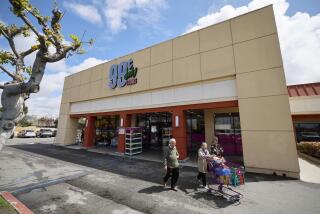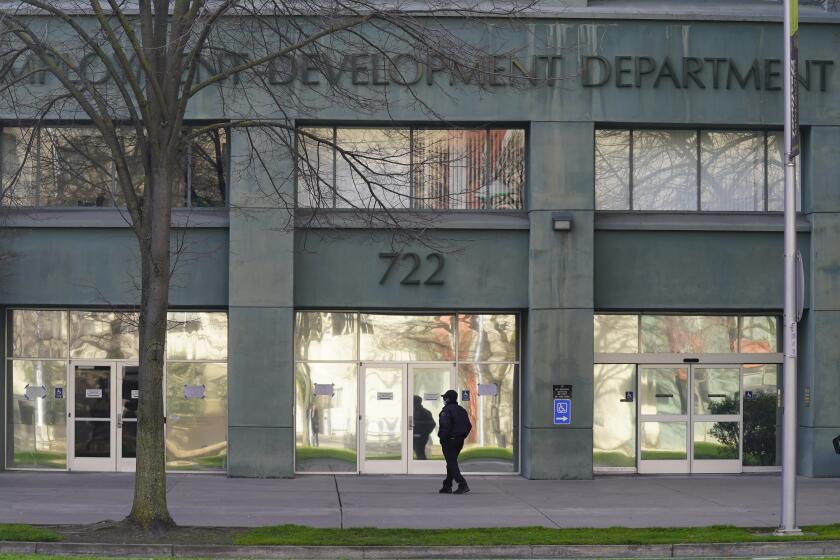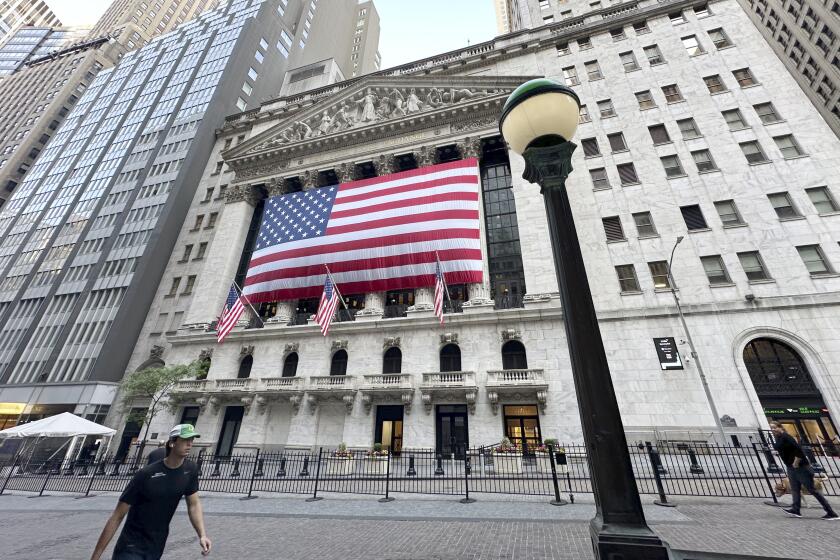FINANCIAL MARKETS : Big-Ticket Factory Orders Dive 4.2% : Economy: July plunge in durable goods is result of interest rate increases, some analysts say. Others call drop an aberration.
Orders for big-ticket factory products took their steepest dive in 2 1/2 years in July, the government said Wednesday in a report that many analysts viewed as a sign that the Federal Reserve Board’s interest rate increases are beginning to pinch.
The Commerce Department reported that orders for durable goods--covering everything from bicycles to tanks--plunged 4.2% last month following gains of 1.2% in June and 1.4% in May.
Some analysts insisted that the falloff, which was far larger than expected, was a statistical aberration and not a sign that the manufacturing recovery was about to be derailed.
They noted that more than half the drop occurred because auto plants shut down production for two weeks in July for their annual retooling for the new model year.
But other analysts said the weakness went far beyond autos, with declines widespread in virtually every sector. They said it was strong evidence that the Fed’s rate increases, intended to dampen inflationary pressures, were beginning to have an impact in slowing the economy.
“The consumer, housing and industrial sectors have all gotten off to a weak start this quarter,” said Bruce Steinberg, an economist at Merrill Lynch in New York. “The Fed wanted to slow the economy to a more sustainable pace of growth, and they are in the process of doing that.”
Steinberg said Wednesday’s report on factory demand, coupled with the other signs of weakness, will cause him to revise downward even further his forecast for growth in the current July-September quarter. He said his new forecast will be perhaps half the nearly 4% turned in during the first six months of the year.
Robert D. Barr, an economist at the U.S. Chamber of Commerce who has been critical of the Fed’s rate increases, said the slowdown in manufacturing called into question last week’s half-point increase in two key interest rates, the fifth rate increase this year.
Barr said the economy is slowing “in the face of higher interest rates, lower personal income growth and a buildup in inventories.”
But the Clinton Administration dismissed fears that the recovery is in danger of stalling. Commerce Secretary Ronald H. Brown said it would be “silly” to draw too many conclusions from a single economic report.
“Our view is that the economy’s in good shape. The growth rate is what we predicted it to be and what we’d like it to be,” he said.
Other analysts agreed that it would be wrong to read too much into the July decline in manufacturing orders.
“This is an aberration because of all the statistical noise, and we will have to wait until August to get a true picture of what is going on,” said Robert Dederick, chief economist at Northern Trust Co. in Chicago. “The shutdowns in July seriously distorted the picture.”
Analysts noted that even with the July setback, the largest drop since a 5.4% plunge in December, 1991, durable goods orders were still up a strong 13.3% from their level a year earlier.
Some analysts said the numerous signs of slowdown should ensure that the Fed’s Aug. 16 rate increases will be the last for a while, at least until mid-November.
For July, durable goods orders totaled $144.87 billion, a drop of $6.38 billion from the June level.
Transportation orders fell 15.8%, reflecting not only the shutdown at auto plants but also declines in demand for aircraft.
Defense orders fell 16.4% in July, and non-defense capital goods, considered a good barometer of industry plans to expand production facilities, fell by 5.3% after having posted a strong 7.4% rise the month before.
Orders for primary metals such as steel were down 0.8%, and demand for industrial machinery was off 1.5%.
The only major category to show an increase was electronic equipment, which posted a gain of 0.8%.






